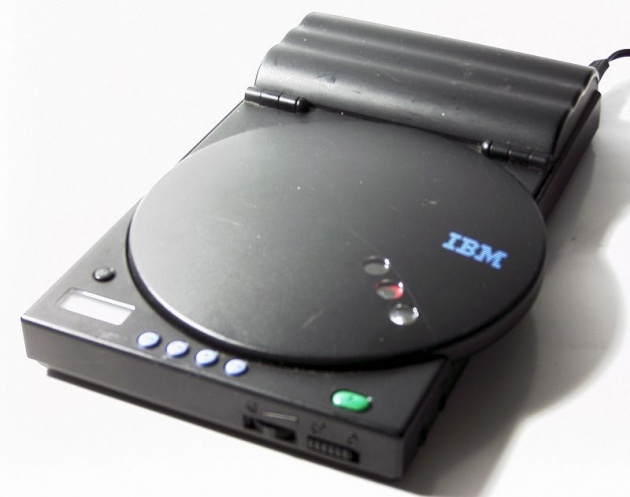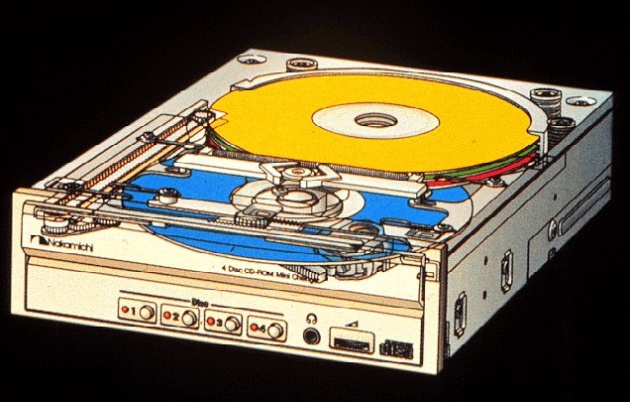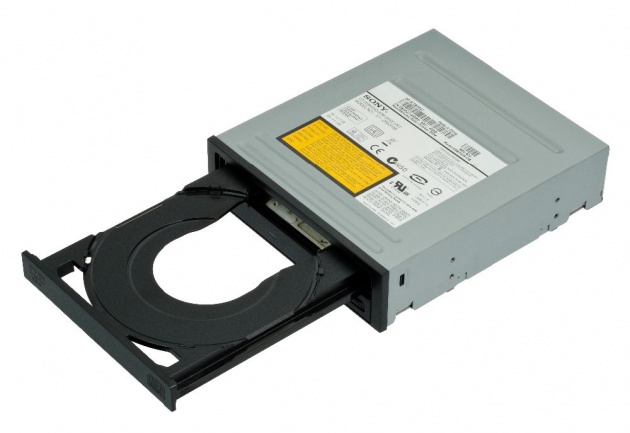CD-ROM Drives
In a few short years, the Compact Disk - Read Only Memory (CD-ROM) drive has gone from pricey luxury to inexpensive necessity on the modern PC. The CD-ROM has opened up new computing vistas that were never possible before, due to its high capacity and broad applicability. In many ways, the CD-ROM has replaced the floppy disk drive, but in many ways it has allowed us to use our computers in ways that we never used them before. In fact, the "multimedia revolution" was largely a result of the availability of cheap CD-ROM drives.

As the name implies, CD-ROMs use compact disks, in fact, the same physical disk format as the ones we use for music. Special formatting is used to allow these disks to hold data. As CD-ROMs have come down in price they have become almost as common in a new PC as the hard disk or floppy disk, and they are now the method of choice for the distribution of software and data due to their combination of high capacity and cheap and easy manufacturing. Recent advances in technology have also improved their performance to levels approaching those of hard disks in many respects.

CD-ROM drives play a significant role in the following essential aspects of your computer system:
- Software Support: The number one reason why a PC today basically must have a CD-ROM drive is the large number of software titles that are only available on CD-ROM. At one time there were a few titles that came on CD-ROM, and they generally came on floppy disks as well. Today, not having a CD-ROM means losing out on a large segment of the PC software market. Also, some CD-ROMs require a drive that meets certain minimum performance requirements.
- Performance: Since so much software uses the CD-ROM drive today, the performance level of the drive is important. It usually isn't as important as the performance of the hard drive or system components such as the processor or system memory, but it is still important, depending on what you use the drive for. Obviously, the more you use the CD-ROM, the more essential it is that it perform well.
This chapter examines CD-ROM operation in detail. It discusses how CD-ROMs work, the basics of CD-ROM media, and the various formats used for storing data and other information such as sound. A discussion on CD-ROM performance, reliability and interfacing is provided, along with a brief look at the newer, recordable CD formats.

CD-ROMs are a huge topic in the computer world today, so large that I cannot spend as much time as I would like discussing every aspect. This is especially true of the recordable formats such as CD-R and CD-RW, which are evolving quickly and represent a new use of the CD-ROM that most people still are not taking advantage of. My concern here is from the perspective of the PC user and home builder/upgrader, so I am sticking with basic CD-ROM topics, though I will expand coverage to the other technologies at the appropriate time. I do provide a basic description of the newer CD-ROM variants and provide references to where more information can be found. For additional generic information, try the CD Information Center.



